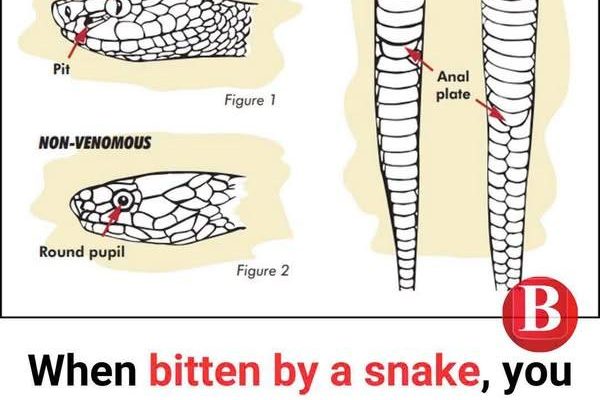The idea of getting bitten by a snake can really make your heart race, but before you start freaking out and pretending to be a cowboy, forget about trying to suck out the venom. If you happen to run into a snake, knowing what to do if you get bitten can actually save a life, maybe even your own.
Not every snake is dangerous, and most snake bites in the U.S. don’t lead to death. However, some bites can cause serious injury or even be deadly if you don’t get help fast. So, let’s break it down!
Venomous snakes
Out of the thousands of snake species in the world, only about 15% are venomous, and in the U.S., that number goes up a bit to around 20%, according to the Mayo Clinic.
Venomous snakes in North America Include:
- Rattlesnakes
- Copperheads
- Cottonmouths
- Coral Snakes
Most venomous snakes in the U.S. are pit vipers, recognized by their triangular heads, slit-shaped pupils, heat-sensing pits between the eyes and nostrils, and of course fangs. The coral snake breaks the mold with its round pupils, cigar-shaped head, and bright red, yellow, and black bands.
Snake Bite Symptoms
Most snakes usually strike at the upper body – like arms, wrists, or hands – often because someone got too close or didn’t see the snake in time.
Nonvenomous Snake Bite
If you’ve had a run-in with a nonvenomous snake, you’re pretty lucky. These bites can be uncomfortable, but they usually aren’t too serious. You can expect some pain, maybe a few scratches or puncture marks, and possibly a little swelling or redness where you were bitten. It’s like nature giving you a warning.
Venomous Snake Bite
However, if a venomous snake bites you, things can get serious really fast. The pain is usually sharp and intense right away, spreading from the bite and getting worse over time. Swelling and bruising often happen too – and it’s not just around the bite area, according to the Mayo Clinic. Your body might react with nausea, trouble breathing, feeling weak, or even a strange metallic taste in your mouth that seems to come from nowhere.
Some snakes, like the coral snake, have a different kind of venom. Instead of attacking your body tissue, their toxins affect your nervous system, leading to droopy eyelids, tingling in your fingers or toes, trouble swallowing, and muscle weakness. These symptoms are not just weird; they’re really dangerous and mean you need to get emergency help right away.
Dry bite
Sometimes, a snake can give a dry bite, which means it bites down with its fangs but doesn’t release any venom.
Understanding the different types of bites and spotting symptoms quickly can really help.
The American Red Cross warns that “Most deaths from venomous snake bites happen because the person had an allergic reaction to the venom, was already in bad health, or waited too long to get medical help.”
What to do if you’re bitten by a snake
Stay calm: Although it’s easier to say than to actually do, remaining calm can help lower your heart rate, which may slow down how fast the venom spreads.
Call emergency immediately: Make sure to dial 911 or get to the closest emergency room as fast and safely as you can. Quick medical attention can save lives.
Keep the bite area still and below heart level: Moving around can make the venom spread faster. If you can, try to keep the bitten limb still using a splint or sling and position it lower than your heart.
Remove tight clothing and jewelry: Swelling can occur quickly. Take off any rings, watches, or tight clothes near the bite area to prevent circulation problems.
Try to identify the snake: If it’s safe, snap a picture of the snake or remember its color and shape. This information can help doctors provide the correct antivenom.
What not to do
Knowing what not to do after a snake bite is just as crucial as knowing what to do.
Do not:
- Try to suck out the venom – That’s Hollywood, not medicine.
- Cut the wound – You’ll just make things worse.
- Apply ice or a tourniquet – Both can cause tissue damage.
- Try to capture or kill the snake – Don’t play hero and try to catch the snake.
Getting bitten by a snake can be really frightening, but if you take the right actions, you can greatly improve your chances of healing completely. Also, keep in mind that snakes don’t want to harm you. Most of them would prefer to just escape instead of causing trouble. But if you do get bitten, you now know what steps to take.
Make sure to tell your friends about this story so they’ll know what to do if they ever get bitten by a snake!



